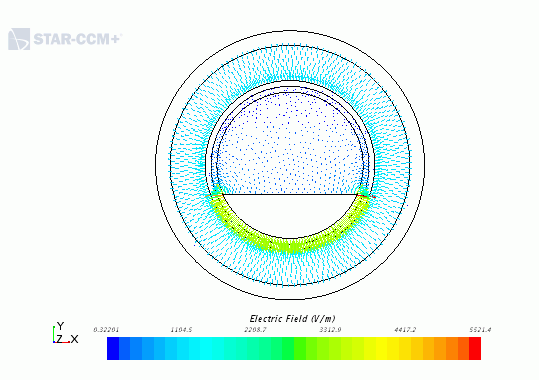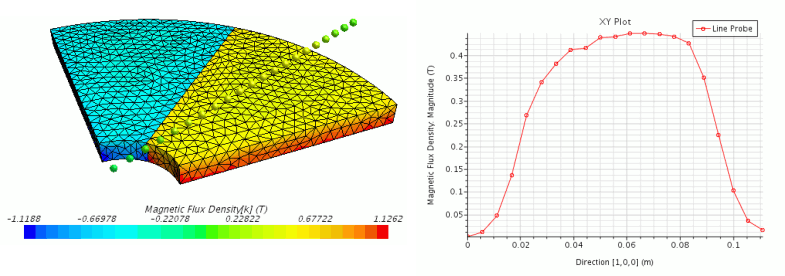Electromagnetism
Simcenter STAR-CCM+ allows you to model engineering applications involving electromagnetic phenomena. Example applications are electric motors, electric switches, and transformers, which can be modeled based on the classical theory of Electromagnetism.
The governing equations and their implementation in Simcenter STAR-CCM+ are presented in the Electromagnetism section of the Theory Guide.
| Note | For electromagnetic simulations, you require a double-precision version of Simcenter STAR-CCM+. |
Target Applications and Models Overview
- Electrostatics
- Electrostatic simulations model electric charges in dielectric or poorly-conducting materials. Electrostatic applications assume that the distribution of electric charges does not vary with time, or that the variation occurs over relatively long time scales. Dynamics effects can therefore be neglected.
- Low-Frequency Electromagnetics
- Simcenter STAR-CCM+ allows you to model low-frequency electromagnetic fields in conducting media. For low-frequency, the conduction currents in the conducting material are orders of magnitude greater than the displacement currents, which are therefore neglected.
The following workflow sections assume that you are already familiar with general Simcenter STAR-CCM+ tasks, such as importing or generating a volume mesh, activating physics models, selecting materials, and creating reports and scenes. For more information on the Simcenter STAR-CCM+ general workflow, see General Simulation Process.
To visualize the electric and magnetic field lines, you can create a streamline derived part. As these field lines can have a normal component to the walls at a boundary, set the Wall Treatment derived part property to Off. See Streamline and Constrained Streamline Properties.
| Note | In general, when the simulation contains multiple solids, you are recommended to use the Multi-Part Solid model, rather than creating a separate physics continuum for each of the solid materials. For more information, see Modeling Multi-Component Solids. |
Electromagnetic Material Database
For electromagnetic applications, you can define materials using the Electromagnetic material database. This material database, originally created for Simcenter MAGNET, contains a variety of predefined materials, including different types of magnetic steels, and ceramic and rare earth permanent magnets. Depending on the material, the predefined electromagnetic properties can include B-H values as well as temperature-dependent values.


